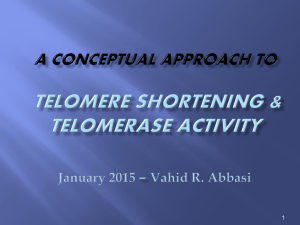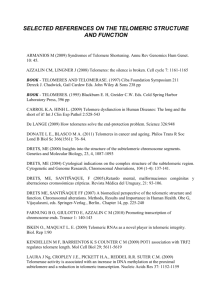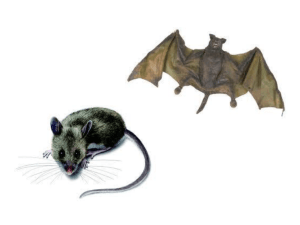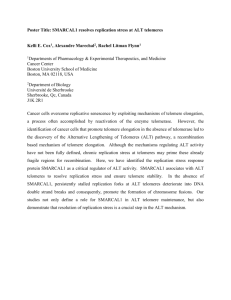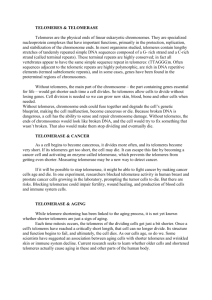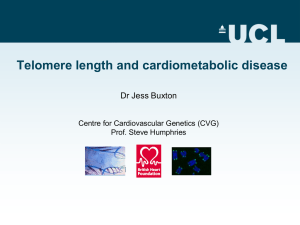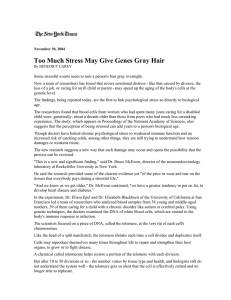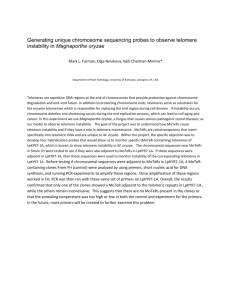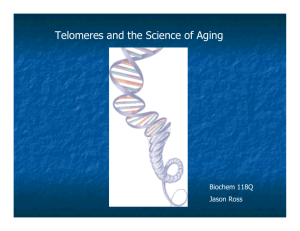Telomeres and Telomerase in Cancer
advertisement
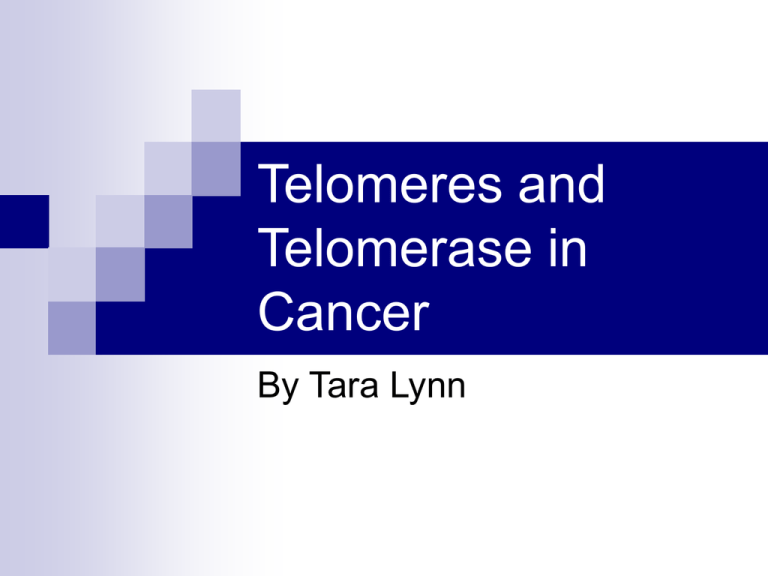
Telomeres and Telomerase in Cancer By Tara Lynn What is a telomere? A telomere is the end structure of a chromosome. Telomeres are essential regulators of both cell life span and chromosomal integrity. jshay@mednet.swmed.edu, University of Texas, Southwestern Medical Center Why do we need telomeres? Telomerase Demo created by Dr. Donald F. Slish at SUNY, Plattsburgh What is the structure of a telomere? All telomeres are composed of large arrays of short guanine-rich sequences, such as those found in mammalian cells, 5’-TTAGGGG-3’. (Hahn. Journal of Clinical Oncology, vol21, no10, pp2034-2043) Structure of Telomere http://www.erin.utoronto.ca/~w3bio/JBC372/lecture06_2004/sld035.htm Telomeres in embryonic cells, germ cells, and cells that require extended regenerations are long. All other cells have short telomeres. With each cell division telomeres become shorter, until after dozens of divisions telomeres get lost and the cell eventually dies. (Bodnar et al. (1998) Science 279, 349-352). What is Telomerase? In the germ line and in rapidly dividing somatic cells, telomerase, a reverse transcriptase that contains an RNA template, adds TTAGGG repeats to chromosome ends. Lodish et. al. Telomerase is detectable in the majority of cancer cell lines and tumors. jshay@mednet.swmed.edu, University of Texas, Southwestern Medical Center Telomeres and Telomerase can both suppress and cause cancer. Tumor Suppression Tumor Promotion Telomere Loss Telomerase Activation Limits cell lifespan (telomeres long) Protects chromosome ends (?) Induces genomic instability (telomeres short) Promotes immortalization What happens to an organism with dysfunctional telomerase? The results are mixed Option 1: defects and aging Progressive defects in cells with high turnover (immune, hematopoietic, and reproductive organs) in knock out mice. Nature April 9, 1998 Dyskeratosis congenita in humans: premature organ failure, cancer predisposition (Hahn 2003) Option 2: Nothing happens for several generations After five or six generations, telomere loss in mice leads to sterility. (Greider 1997) mice that lack telomerase activity and show short telomeres are tumor resistant, except when the p53 tumor suppressor protein is absent. (Blasco 2001)
